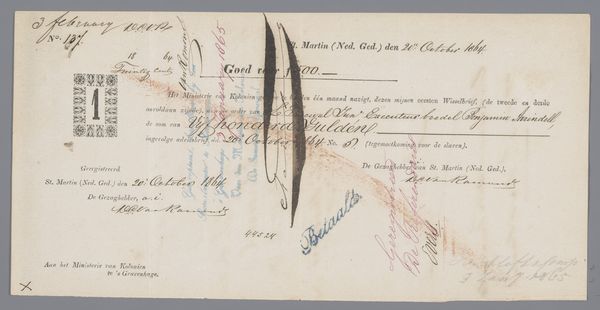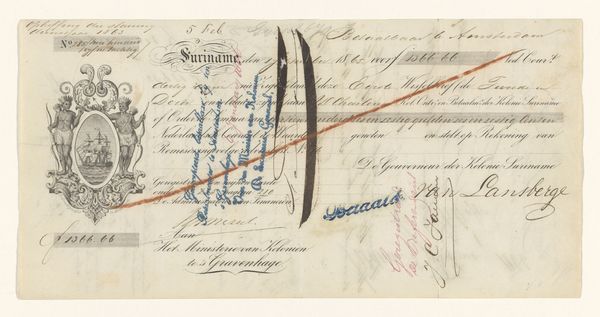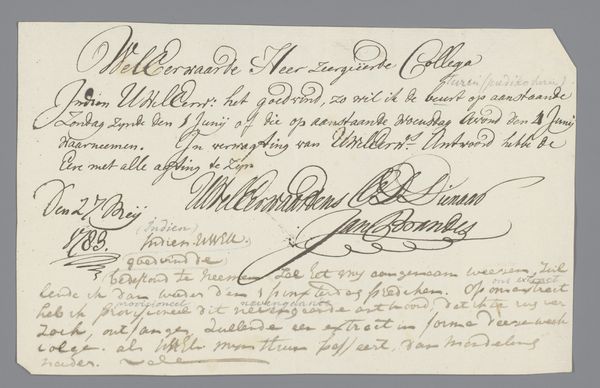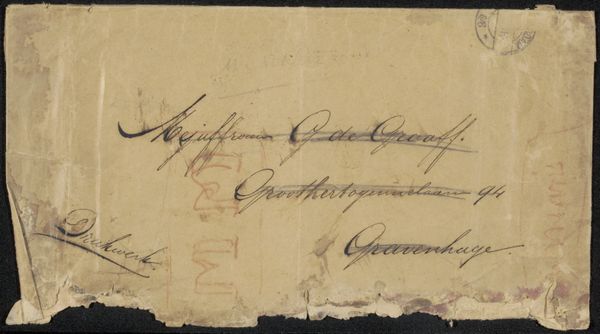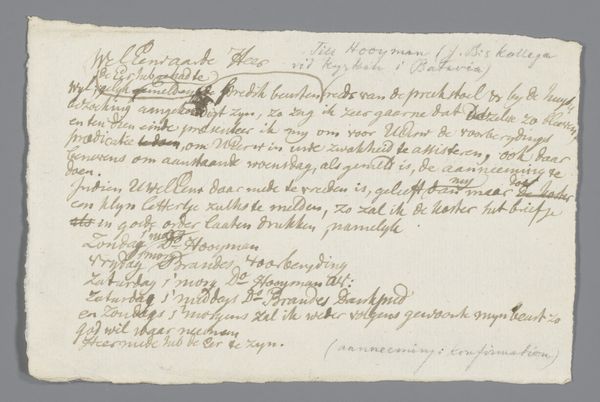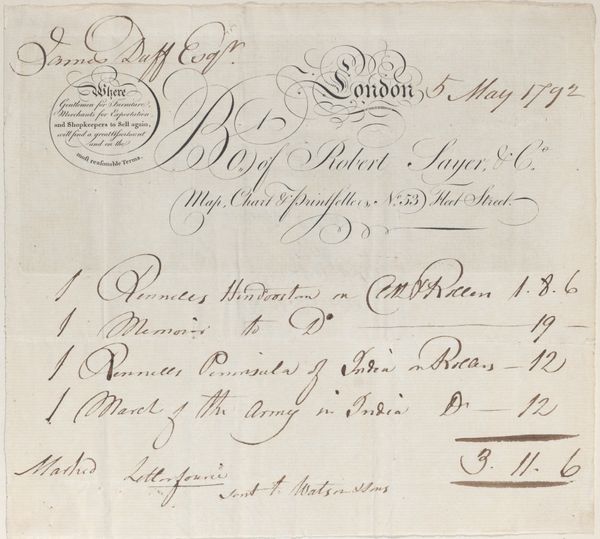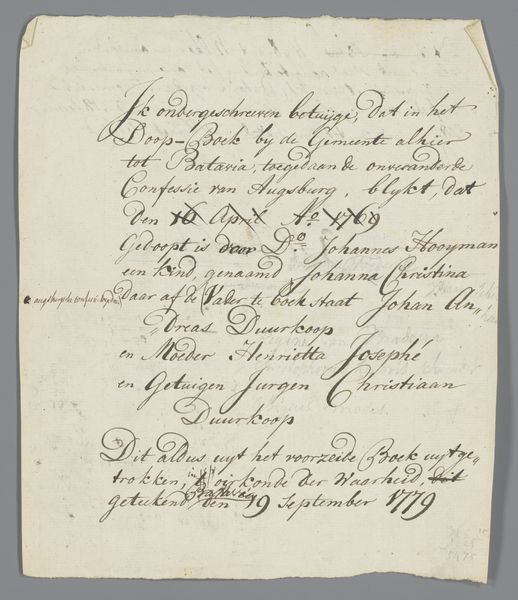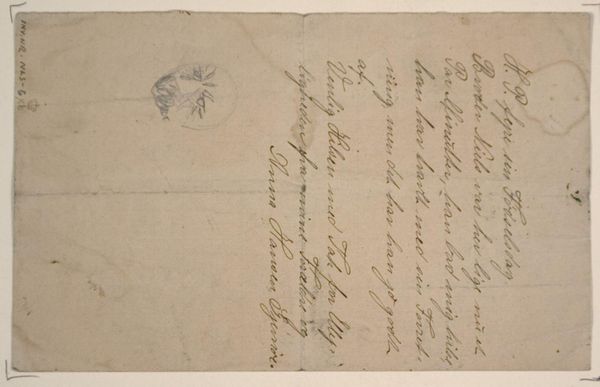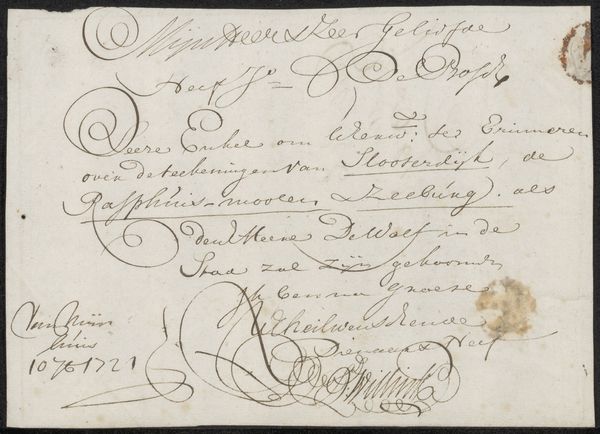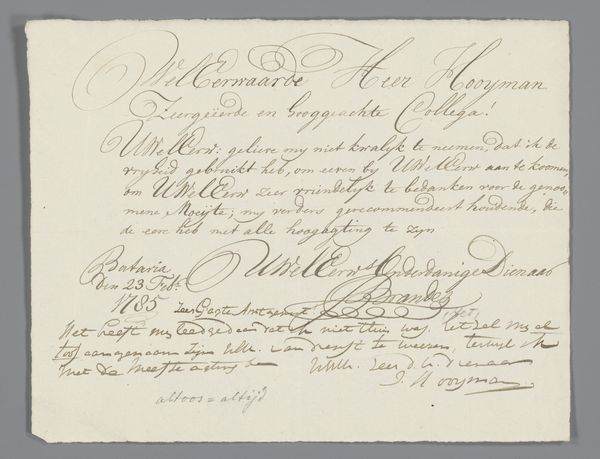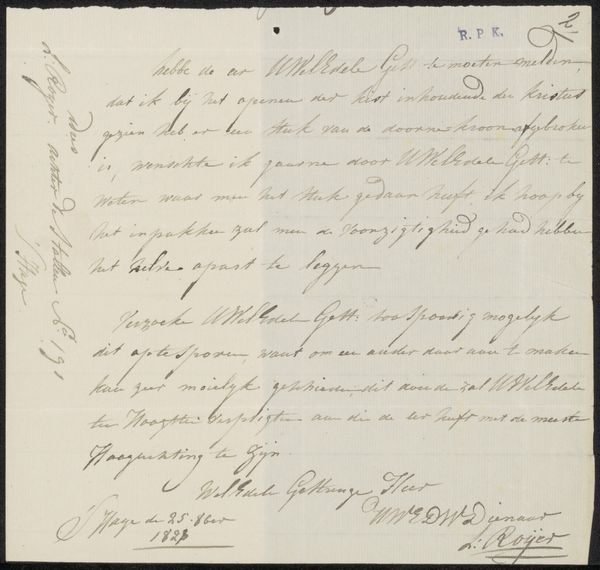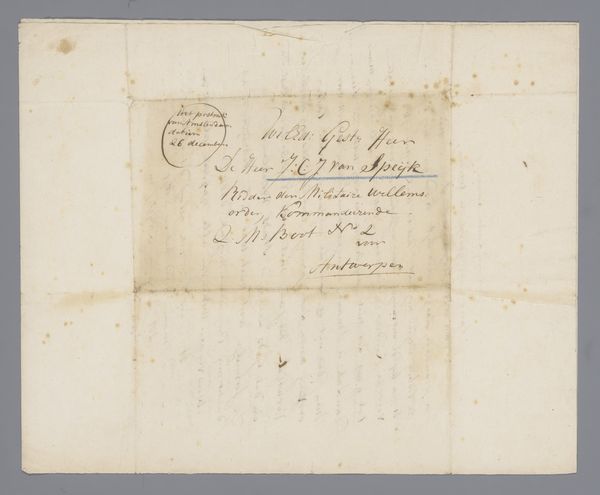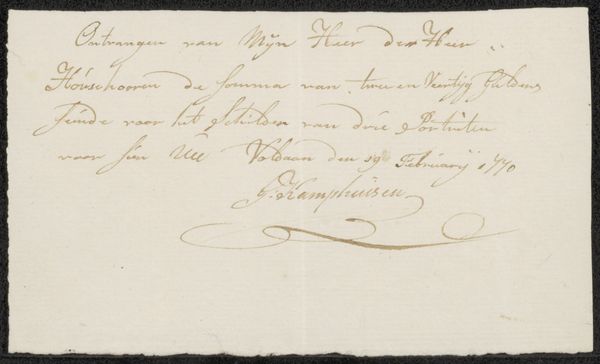
drawing, print, paper, ink
#
drawing
#
narrative-art
# print
#
paper
#
ink
#
history-painting
#
academic-art
#
miniature
#
calligraphy
Dimensions: height 130 mm, width 270 mm
Copyright: Rijks Museum: Open Domain
Here is an analysis of the ‘Bill of exchange ‘Abolition of Slavery’, produced in 1863 by the Ministerie van Koloniën. This bill of exchange strikes a stark contrast between the fine script denoting monetary transaction, and the monumental event it signifies: the abolition of slavery. The composition features dense calligraphic elements in black and red ink, offset by the stark emptiness of the paper. Through a formalist lens, one can understand how its structural components come together. The text's very density evokes the complex legal and economic systems which have been in place to administer colonialism and slavery. The central overprinting obscuring the text destabilizes legibility and fixed meaning. The bill's design elements, such as the colonial seal depicting indigenous figures flanking a ship, speak to the semiotic systems used to legitimize colonial power. These visual cues, alongside the bill's monetary value, suggest how abolition was not just a moral imperative, but also an economic transaction. It points to the commodification of freedom itself. Finally, the form and function of this document offer insights into the cultural and philosophical debates surrounding emancipation. It underscores that abolition was a process deeply embedded in systems of power, rather than a singular, moral event.
Comments
rijksmuseum about 2 years ago
⋮
Slavery was abolished in Suriname and the Dutch Antilles in 1863. Perversely, it was not the people held in slavery who were compensated by the state, but the slave holders. A.D. Charlouis was able to exchange this bill for 300 guilders. However, formerly enslaved people in Suriname were not yet truly free. Everyone between the ages of 15 and 60 had to continue working for another ten years, in return for payment.
Join the conversation
Join millions of artists and users on Artera today and experience the ultimate creative platform.
